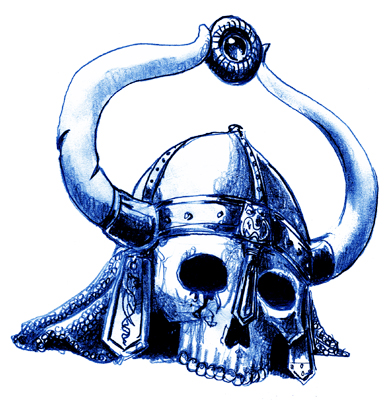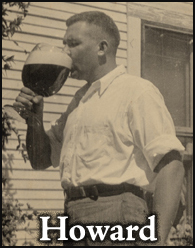The Cimmerian V4n2 — April 2007

Edited by Leo Grin | Illustrated by Andrew Cryer
40 pages
This issue was printed in two editions. The deluxe edition, numbered 1–75, uses a black linen cover with foil-stamped midnight blue text. The limited edition, numbered 76–225, uses a midnight blue cover with solid black text.
DELUXE COPIES DESTROYED: 3
LIMITED COPIES DESTROYED: 55
Features a lengthy symposium on the two main anthologies that appeared during the Centennial Year, with four articles totaling tens of thousands of words, poetry by Fred Phillips, a meaty Lion’s Den, and more.
EXCERPTS:
Joshi’s initial attempt at Howard criticism is a short and decidedly minor effort. “Bran Mak Morn and History” merely provides a quick summary of the Mak Morn series, combined with a brief history of the Roman invasion of Britain and the subsequent occupation.
Errors appear in short order….
— from “The Statement of S. T. Joshi” by Morgan Holmes
Szumskyj also parades forth the idea that Jack Johnson was the basis for Ace Jessel, writing that there “are several possible influences for Howard’s Jessel. The two most obvious are Jack Johnson and Tom Molineaux.” Obvious to him, perhaps, but not to me or to anyone else at all familiar with the history of boxing. Szumskyj is probably familiar with Johnson from Ken Burns’ documentary Unforgivable Blackness, or the movie The Great White Hope. I have the feeling from reading his essay that if he had never read Howard’s story of Jessel and Molineaux he might never have even known who “The Tremendous Man of Color” was, and if there wasn’t an Internet I wonder what the extent of his knowledge of boxing would be.
Jack Johnson is not Ace Jessel. Nothing, in my opinion, could be further from the truth.
— from “The Fouling of Robert E. Howard” by Brian Leno
All I knew going in was that “Hat” was part of an aborted series about three characters named Steve Bender, Weary McGraw and the Whale. The HowardWorks website has them listed under “Strange Detective/Weird Menace,” and notes that “Hat” is the only one of four such tales that Howard finished. So I expected this to be an example of Howardian juvenilia, perhaps something he conjured up as a kid along with his Frank Gordon and Sonora Kid episodes.
Imagine my surprise, then, when Dennis revealed in his introduction to the story that it was actually written in 1933, the same time period that saw Conan fully come into his own — vintage Howard.
— from “‘Our Labor of Love'” by Leo Grin
Something bothers me after reading this article, where Ben quotes de Camp writing about his discovery of Howard:
I never knew REH and had never read any of his fiction until the Gnome Pr. ed. of Conan the Conqueror appeared in 1950; I read it and was hooked.
This comment was made many years later, and I’m sure de Camp intended to convey nothing but enthusiasm for Howard’s work. Only, there is a different quote in the record of de Camp regarding his Howard discovery, one that was made at the time, and that stands in rather stark contrast:
Howard’s work suffered from careless haste. His barbarian heroes are overgrown juvenile delinquents; his settings are a riot of anachronisms; and his plots overwork the long arm of coincidence. Nevertheless the tales have such zest, speed, vitality, and color that the connoisseur of fantasy will find them worth reading.
Science-Fiction Handbook (Hermitage House, 1953)
This is faint praise indeed….
— John Haefele, writing in The Lion’s Den




